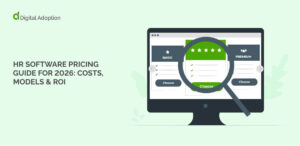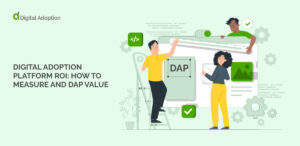Every business organization needs reliable, actionable data to function and run effectively. And not only to run smoothly but to also implement critical changes required to improve their day-to-day business activity.
However, many organizations often stockpile vast volumes of data to get these data, most of which are non-essential. When this happens, there becomes a need to sift through those data and get the relevant ones.
This is where data mining and segmentation come into play.
In its simplest form, data mining is the process of extracting relevant, actionable data from a large dataset. More on this shortly.
On the other hand, segmentation is the concept of creating groups, or in this context segments, out of a collection of data.
In this post, we will be looking at what data mining and segmentation are all about. This will help you better understand the concept of data mining and segmentation, the techniques and types, and some of the tools commonly used.
What are Data Mining and Segmentation Techniques?
Data mining and segmentation techniques refer to organizations’ methods to mine and segment data. This term is also used to refer to the process by which organizations develop practical and data-driven insights by examining the data available at their disposal.
What are the techniques of data mining?
There are a lot of techniques used for data mining. Some of the common ones are as follows:
1. Classification
The Classification data mining technique involves looking at data to identify matching, recurring patterns. Data with similar characteristics and patterns are then bundled together and categorised.
The classification technique comes in handy when an organization looks to identify recurring patterns in its data.
2. Clustering
The Clustering data mining technique is pretty similar to the classification technique. In this method, an organization looks into its data set to identify similar characteristics. Identical data sets are then grouped into clusters and isolated from the rest.
A typical example of clustering is when a business groups its customers based on criteria such as geo-location, income bracket, gender, etc.
3. Prediction
By observing past patterns and trends, an organization can, to a large extent, accurately predict what the future will likely turn out to be. This is the basis for predictive data mining.
A good example of predictive data mining is when a loan company looks into the credit score of their customers to form data to assess their loan worthiness.
4. Tracking patterns
The essence of data mining is to track and identify patterns in a dataset and then take actions that will improve an organization’s outcomes based on that insight. Hence why the tracking patterns data mining technique is essential.
For example, an organization might notice that their customers tend to buy more of a particular product than others. In such a case, the organization can consolidate its efforts in making that product and let go of the rest.
5. Association
Association data mining technique involves looking for relatable, connected attributes and events in a dataset.
For example, an eCommerce business might notice that customers who buy one of their products tend to buy a complementary product. Based on this insight, the company can accurately suggest products customers on their website might like.
What are the types of data mining?
Data mining is of different types. The most common one is web mining, which involves mining for data on the web. Other types of data mining include pictorial mining, textual mining, social mining, video mining, and many more.
Data mining technique examples
Data mining isn’t an abstract concept; it plays out in our day-to-day lives. Here are some of the practical examples of data mining.
1. Weather forecasting
Meteorologists can predict and forecast the weather because they analyse a huge volume of data every day. They often employ the association mining technique to forecast weather.
For example, Meteorologists can predict if it will rain tomorrow by observing rain patterns over the last years.
2. Banking
The banking industry is one of the largest consumers of data. Mining data and identifying patterns can help a bank smoothly keep its operations.
For example, Banks use data mining to assess a customer’s likelihood to repay a loan, study the market and spot risks, etc.
3. eCommerce personalisation
Studies have shown that eCommerce companies that personalize their customers’ buying experience by suggesting products they will likely want, tend to enjoy better sales than those that don’t.
It takes a lot of data mining efforts to understand buyers’ preferences and personalise their experience.
For example, if you have ever shopped for a movie or show on Netflix, you would have noticed that Netflix’s algorithms are smart enough to know movies you will most likely want to watch.
4. Fraud detection
Financial fraud happens quite frequently in many organizations. The sad truth is that they often go unnoticed. However, by mining available data and observing patterns, an organization can easily spot and checkmate fraud before it escalates.
For example, by checking mismatches and irregularities in their data, a manufacturing outfit can spot vendor fraud easily.
Data mining techniques and algorithms
Earlier, we discussed some of the popular techniques used in data mining. But what we didn’t mention is that data mining only works when there is a working algorithm in place.
Algorithms are a set of rules that helps a computer program make sense of a dataset.
Here are some data mining algorithms you ought to know about.
1. K-mean algorithm
The K-mean algorithm works by grouping a dataset into subsets, with each subset sharing a common similarity. This type of algorithm is mostly used in clustering data mining.
2. Apriori algorithm
Earlier, we discussed the associative data mining technique and how it works. The thing is, association data mining needs the Apriori algorithm to work. This algorithm works by identifying correlations and mutual relationships in a dataset.
3. C4.5 algorithm
This type of algorithm happens to be one of the most popular data mining algorithms. It works by creating a decision tree, which is then used to classify data.
Why is customer segmentation important in data mining?
Customer segmentation makes it possible for an organization to understand its customers’ needs, preferences, and demographics.
When you understand your customers’ needs, addressing those needs in a personalized manner will become much easier.
So, any organization looking to take personalisation seriously and grow its sales must first start with customer segmentation.
Data mining techniques in machine learning
Since most of the data mining your organization will do will be performed by machines, it makes sense to understand some of the data mining techniques used in machine learning. They are as follows:
- Correlation analysis
- Association rule learning
- Long-term memory processing
- Regression analysis
- Classification
Types of data mining tools
What are some of the best tools on the market that are well-suited for data mining? Let’s have a look at some of them.
- Oracle data mining
- Weka
- Kaggle
- Teradata
- Sisense
Conclusion
It’s one thing to collect data; it’s yet another to make sense of that data. An organization can only glean actionable insights and make sense of its data by effectively mining its database.

 FACT CHECKED
FACT CHECKED







